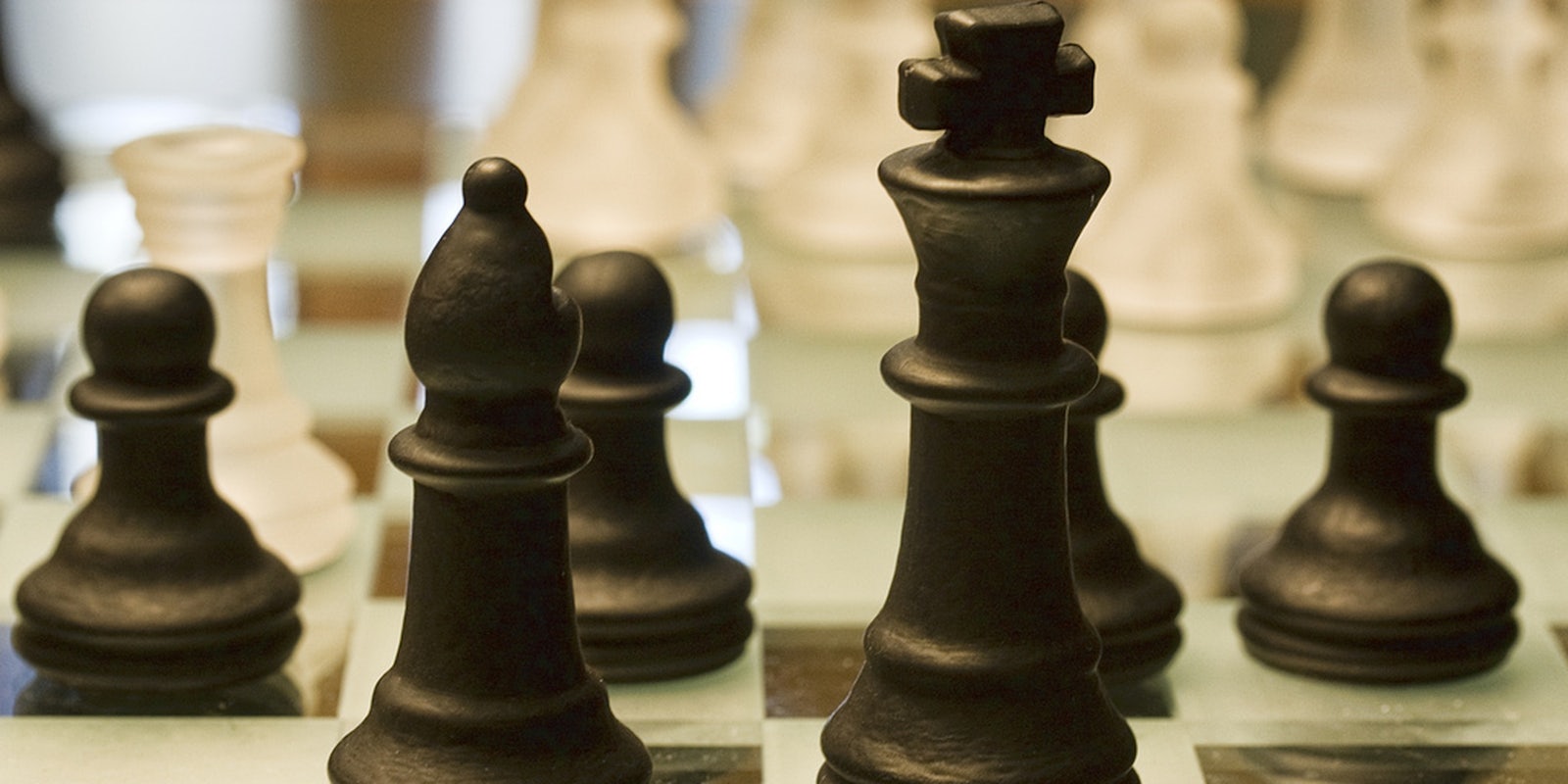When mediocre chess player Arcangelo Ricciardi entered Italy’s prestigious International Chess Festival of Imperia, he was ranked 51,366th in the world. So when he began to destroy his competition, the festival’s judges grew suspicious. As it turns out, their suspicions were justified.
Ricciardi never stood up, always sat with his arms folded and his thumb under his armpit, and blinked constantly and unnaturally. When festival officials inspected him, they discovered that his pendent was a video camera and that he was concealing a Morse code box connected to a computer that was either running a chess program or being monitored by an accomplice.
Ricciardi reached the penultimate match before he was caught. He now faces possible criminal sports-fraud charges.
“In chess, performances like that are impossible,” tournament referee Jean Coqueraut told the Italian newspaper La Stampa. “I didn’t think he was a genius; I knew he had to be a cheat.”
Chess didn’t use to be a ripe field for cheaters, but as technology has become smaller, more personal, and easier to hide, the issue has become more prominent. In 2013, the World Chess Federation and the Association of Chess Professionals were forced to set up an Anti-Cheating Committee.
Yuri Garrett, a member of the committee and an ACP board member, spoke to the Daily Dot from Baku, Azerbaijan where he was “taking care of anti-cheating matters at the FIDE World Cup 2015, where 128 of the world’s best players will battle it out for the top spot as in a tennis tournament.”
Cheating in chess, arguably the purest form of intellectual competition, is almost completely dependent on technology.
“‘Analog’ cheating has been there forever and is not a major threat to chess,” Garrett said. “With computer assisted cheating, however, it’s different. This is not receiving some help from your own printed matters or the occasional tip from a second. This is making a machine play against a man—and there simply is no match.”
Asked to identify the most sophisticated case of technology-based cheating he had come across, Garrett demurred. “Actually, sophistication is not the right word here,” he said. As he explained, players can only cheat by receiving a move on a hidden receiver. “It is more of a hide-and-seek game.”
What is sophisticated, Garrett said, is one of several extremely complex countermeasures that FIDE and the ACP have taken to combat cheating.
The organizations have deployed a statistical tool developed by Professor Kenneth Regan of the University at Buffalo. that checks every game played in an official tournament. It compares each game to a broad and deep pool of statistical data in order to identify “outliers”—players who are performing well beyond their talent level.
“When statistical deviations become significant (i.e. an outlier does not ‘regress to the mean,’ which is the norm), then we alert the arbiters,” he said. “And the hide-and-seek game begins.”
In Ricciardi’s case, he was instructed to empty his pockets, which revealed nothing. Then he was asked to remove his shirt, an instruction he refused. He was then herded through a metal detector, at which point the jig was up.
Money, glory, and ego are all motivations, said Garrett, but “the idea of a perfect crime must be appealing to some.” That idea, like chess excellence itself, is a dream that has alluded Ricciardi.
H/T The Telegraph | Photo via liz west/Flickr (CC BY 2.0)


